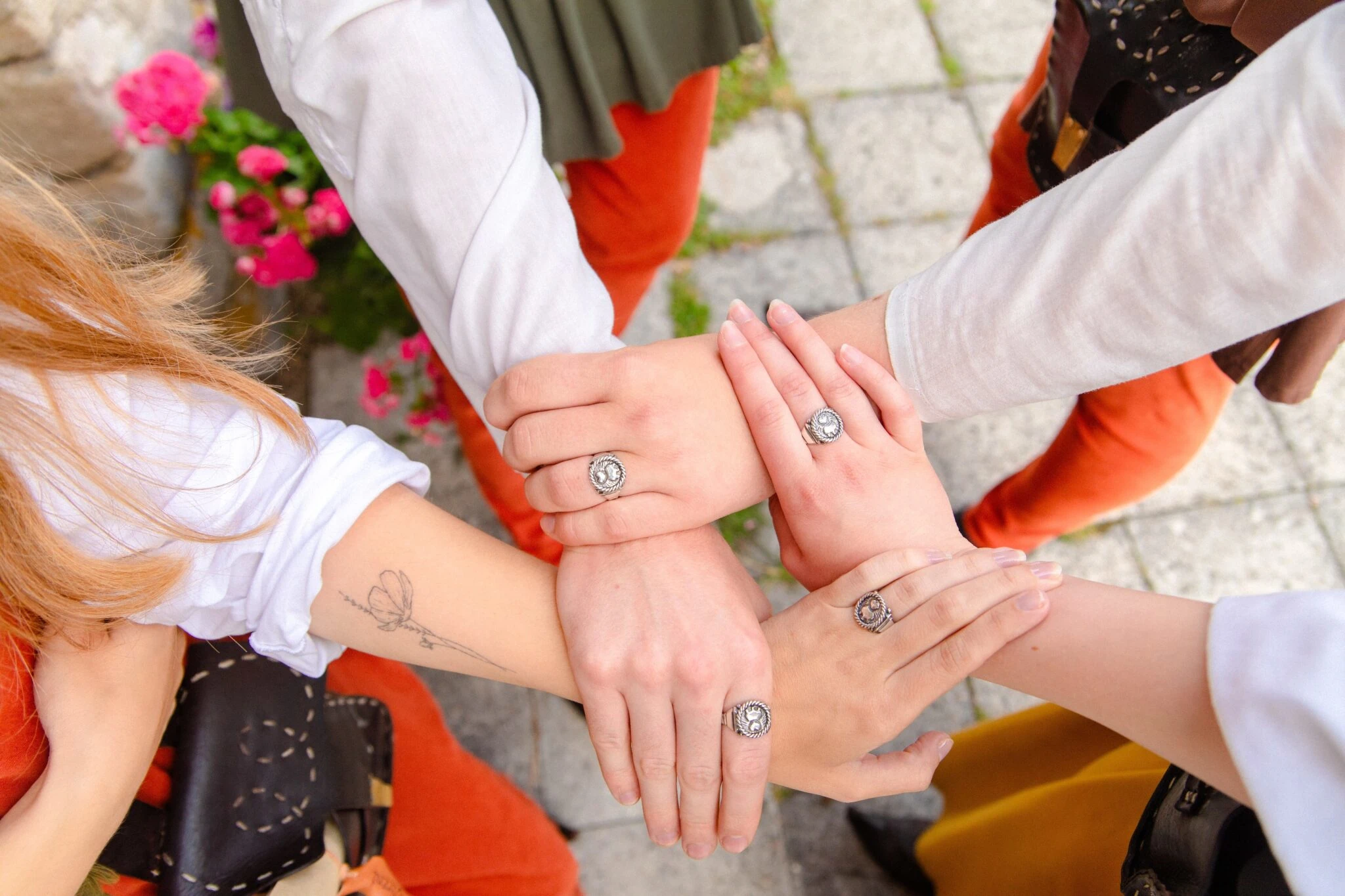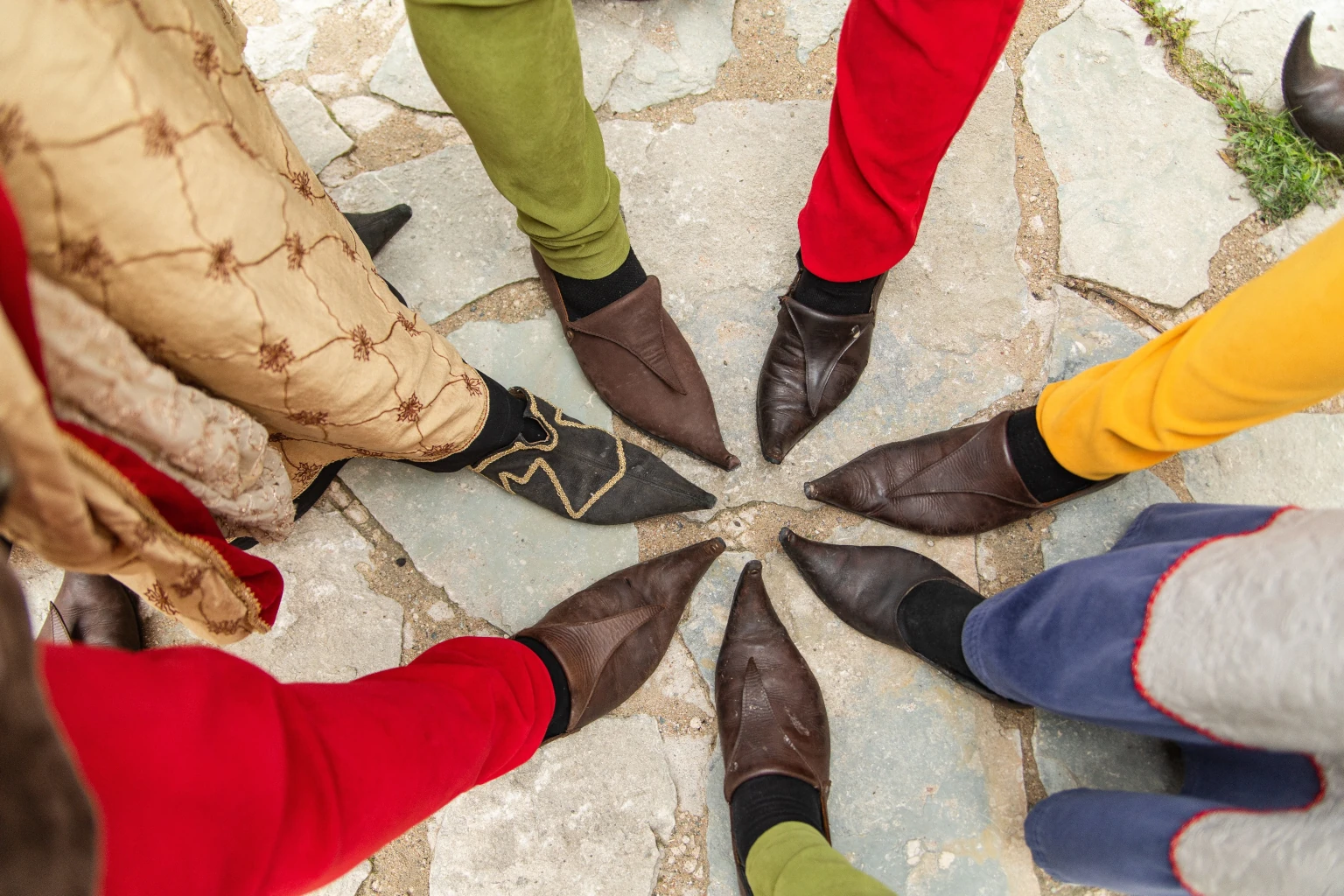Olde Hansa in this day
Olde Hansa
in this day
Olde Hansa restaurant is the Rich Merchants House, where we live by traditional Hanseatic customs, reflected in every action and detail of our servants, the current residents of the house. Everything you see, hear, taste, or touch is inspired by 15th-century practices. Visitors stepping into Olde Hansa will feel transported back in time, guided by our dedicated servants for an authentic medieval experience.
We are committed to offering the delights of medieval cuisine and drinks crafted by master drinkmakers. With three floors and 300 seats, Olde Hansa is a dining destination where every mural, piece of furniture, and detail tells an exciting story or serves a unique purpose.
Olde Hansa Guild
Olde Hansa Guild
It unites all the people of the house – apprentices, journeymen, and craftsmen. Just like in the Middle Ages, only those who do the confection can become the craftsman here. In the Middle Ages, it was necessary to train the profession under the best masters for several years. In Olde Hansa, a journeyman must work at least one year and one day in the Rich Merchants house, before he can boast of the title of a craftsman.
This tradition has lasted for 20 years, and about 400 members of the Olde Guild have earned the title of a craftsman.
Our virtues are Human Respect, Trustworthiness, Friendliness, Courage, Eagerness to Learn, Fair-Mindedness, Staidness and Justice.


Guild apprenticeship
To join the Hansa Guild all our household goes through rigorous educational training to ensure that the Olde Hansa medieval experience is delivered to all our visitors in an authentic and friendly manner.
Garments befitting the era
Each and every stitch on the clothes is period accurate! We have our own tailor and seamstress who both research the period in exceptional detail. We leave no stone unturned in checking authenticity of patterns and fabrics, and even in the case of our famous curly-toed shoes.
A Musical Journey Through Medieval Melodies
Our troubadours play the works of composers who worked in the 15th century on the same instruments common in medieval times, such as the hurdy-gurdy, fiddle, bagpipes, and flutes.
Among other things, one can hear love songs written by the oldest and most productive composer of the old France, Guillaume de Machaut in the early 14th century. Also, pieces from ancient Persia and Armenia.
Also, rare songs and spells from old Finland and stories from Scandinavia from the king’s court of Sweden are presented. In addition, the more knowledgeable ear will catch mystical cantigas written by the Spanish king and talented composer of the 13th century, Alfonso El Sabio, that speak of miracles, saints (for example, the Virgin Mary) and dragons.

Our unique Cuisine
Olde Hansa restaurant is famous for many reasons, but primarily it is the stand-out medieval cuisine – created by our Master Cook (Executive Chef) Emmanuel Wille – with highlights such as: Elk Meat, Wild Boar, Game Sausages, Earl’s Forest Mushroom Soup, Rose Pudding, Honey Beer, Homemade Schnapps.
All our dishes are carefully researched from authentic medieval documents and reflect – as closely as possible – the dining that a wealthy household from the 15th century would prepare.
Attend, good visitors: Potatoes and tomatoes were not yet known to the European table, still awaiting their arrival from the New Worlde. Thus, you shall not find them offered in our house.
Eco-Conscious Feasting in a Medieval Setting
- To avoid excessive bio-waste and leftovers we recommend our clients to order feasts. We serve smaller portions and always emphasise to our guests that if something on the table runs out, they can ask for a refill.
- Our energy consumption is significantly minimal. In the restaurant service area, the only light source for our customers is candlelight, and we burn the candles completely to minimize waste.
- Recycling & Reusing is highly valued in our restaurant. We have a in-house tailor who repairs our costumes instead of going for a new purchase. For furniture and ditches we have people who repair them all the time, for example, the tables in the restaurant have gained a unique touch through various repairs. Also, as to glassware and pottery – when a fragment breaks off, we mend it by grinding and polishing.
- Additionally, our menus are created with the intention of keeping it unchanged for an extended period, eliminating the need to produce extra seasonal menu materials, which is common among Estonian restaurants.
- Our restaurant does not use single-use items such as napkins or paper towels.
- It’s worth noting that our restaurant uses handmade plates crafted by a specific artisan in Estonia.
- The silverware is sourced from antique shops for a new life-cycle, and a designated individual on-site is responsible for cleaning and maintaining them.
- Most ingredients in our menu are purchased from local farmers and small producers. Our menu also represents mostly Estonian game meat, forest berries and forest mushrooms.
- Our restaurant is located in 700 years old house and we cherish local historical heritage with all our hearts.
